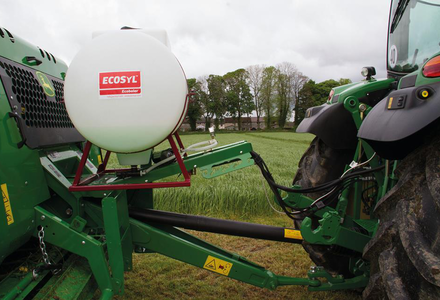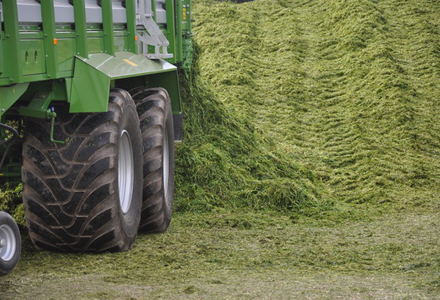Stopping silage problems before they start
04 April 2019
Question: How do you stop problems like silage heating in clamps or clamp slippage once they’ve started?
Answer: You can’t (not easily).
Alan Smith, Volac Business Manager, provides top tips and advice for preventing silage issues such as silage heating or clamp slippage before they start.
_copy_original.jpg?1521897389)
Far better to prevent them happening in the first place. Which comes down to good planning.
Heating can be a problem in winter-opened clamps. But it can be particularly troublesome in clamps opened in summer – for example if buffer feeding to supplement grazing, or feeding yearround housed herds.
That’s because warmer weather encourages the growth of spoilage organisms – the yeasts and moulds that cause heating and ‘burn up’ the silage’s nutrients. Moreover, because less silage may be fed in summer than winter, it isn’t always possible to move the clamp face back quickly enough to stay ahead of the problem.
Keeping silage cool
The key to keeping silage cooler is to stop yeasts and moulds establishing in the first place. As well as good clamp consolidation and sealing to starve them of air, ensure you choose the correct additive.
If you are mainly concerned with achieving a good fermentation, then choose an additive containing a bacterial strain proven to deliver this.
Alternatively, if you’re concerned about losses from heating as well as achieving a good fermentation, then choose an additive containing two types of beneficial bacteria: one for fermentation and the other to target the growth of the yeasts and moulds. That’s what a number of farmers who summer-feed grass silage now do.
Clamp slippage
For slippage, if silage slips from the top of the clamp, it’s often a sign of wet silage having been put on top of dry silage.
If silage slips from the clamp base, it can mean that grass at the bottom was young and leafy when cut, and not wilted well enough. The pressure from weight of silage on top bursts the tender cells of the young grass.
In either case, the answer could lie in making silage slightly drier. Aim for 30% DM for lush grasses and possibly drier for high clamps. For young and leafy grass that’s lower in fibre (for example with multi-cut) consider also chopping it slightly longer – to better hold it inside the clamp.
For more information on good practice silagemaking visit our dedicated website Cut to Clamp or get in touch with our Silage Experts.


